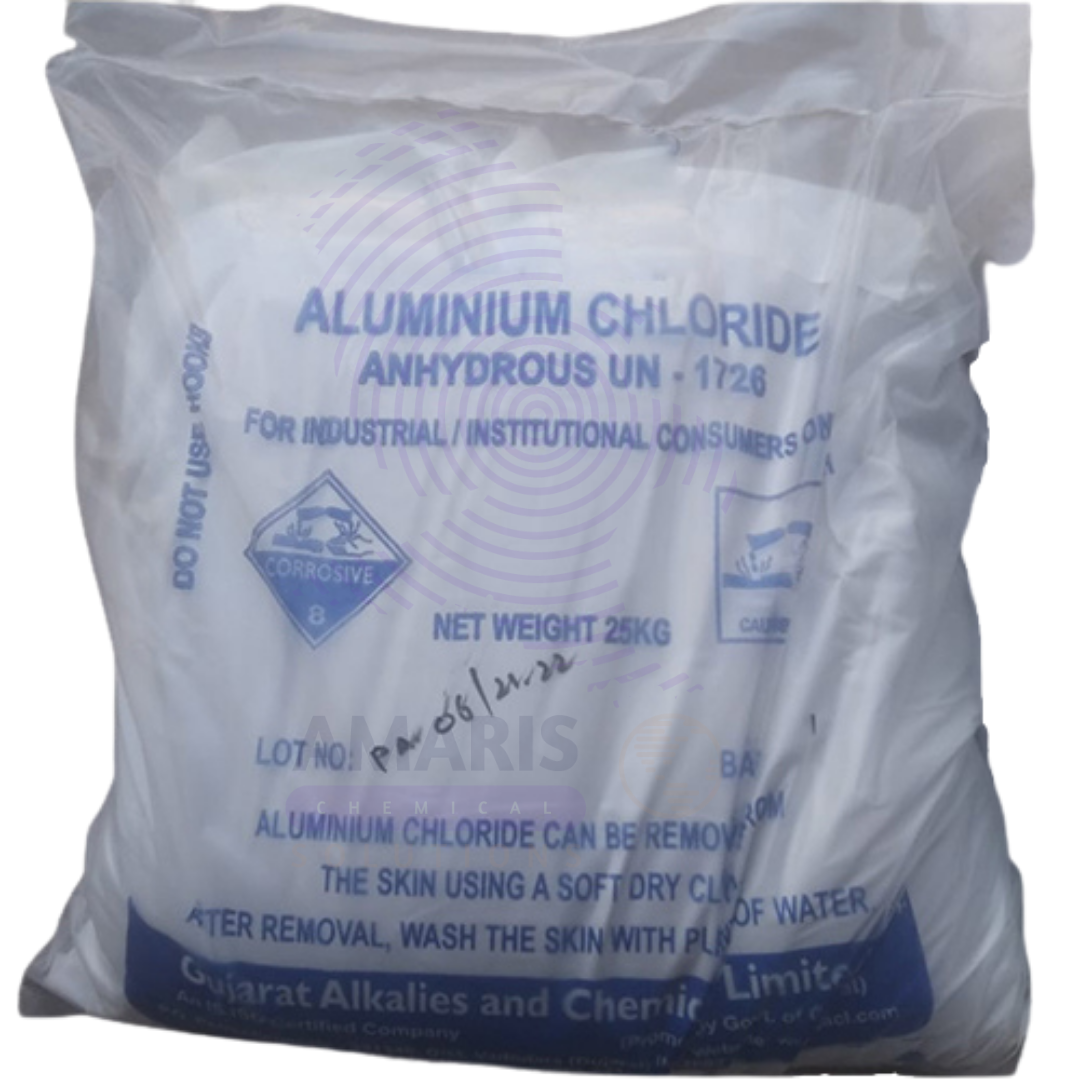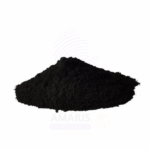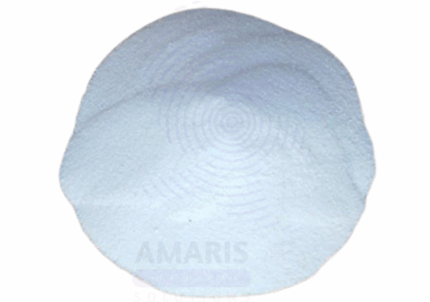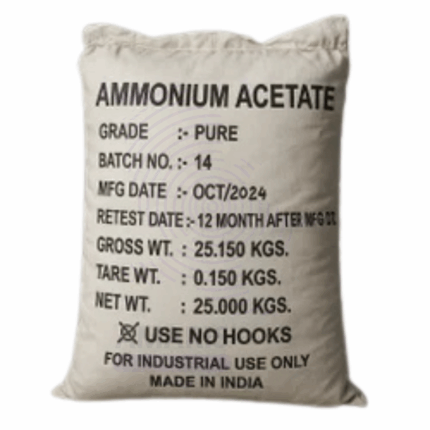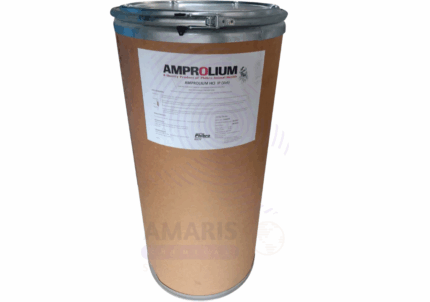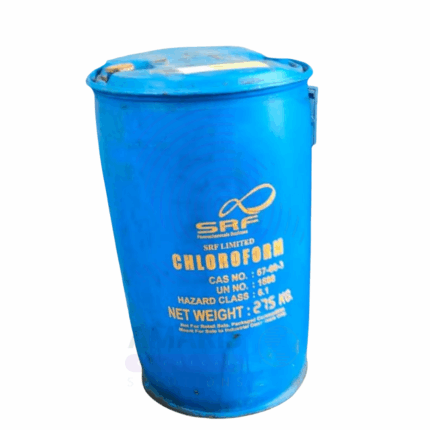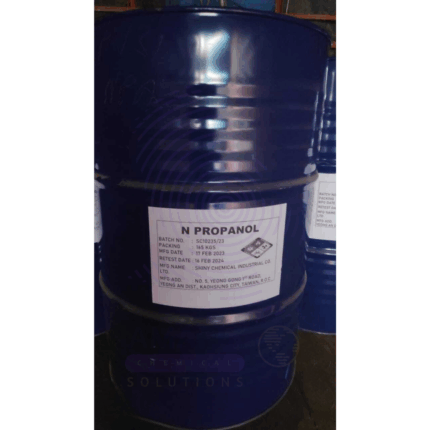
Amylase Baking Enzyme
$ 4.11 Original price was: $ 4.11.$ 4.02Current price is: $ 4.02.
Anhydrous Aluminum Chloride
$ 7.75 Original price was: $ 7.75.$ 7.63Current price is: $ 7.63.
Whatsapp Order
Anhydrous Aluminum Chloride (AlCl₃) is a white to pale yellow crystalline solid known for its strong Lewis acid properties. It is a key catalyst widely used in organic synthesis, especially in Friedel-Crafts alkylation and acylation reactions. Due to its high reactivity with moisture, it must be stored and handled under strictly anhydrous conditions. Anhydrous Aluminum Chloride also finds applications in polymerization, pharmaceuticals, and the production of dyes, pharmaceuticals, and petrochemicals.
Description
Table of Contents
Toggle
Anhydrous Aluminum Chloride
Primary Uses
- Catalyst in Chemical Industry
- Widely used as a Lewis acid catalyst in Friedel-Crafts reactions for alkylation, acylation, and polymerization of aromatic hydrocarbons.
- Essential in the production of detergents, fragrances, dyes, and pharmaceuticals.
- Petrochemical Processing
- Used in catalytic cracking and isomerization processes to improve fuel quality.
- Organic Synthesis
- Facilitates complex organic transformations such as chlorination, sulfonation, and polymerization.
Secondary Uses
- Pharmaceuticals
- Intermediate in manufacturing certain drugs and active pharmaceutical ingredients.
- Electronics & Materials Science
- Employed in etching and surface treatment of metals.
- Water Treatment
- Sometimes used in wastewater treatment as a coagulating agent (less common than hydrated forms).
KEY PRODUCT FEATURES
1. Basic Identification Attributes
- Chemical Name (IUPAC): Aluminum trichloride
- Common/Trade Name: Anhydrous Aluminum Chloride, Aluminum trichloride
- CAS Number: 7446-70-0
- HS Code: 2827.39.10
- Molecular Formula: AlCl₃
- Synonyms:
- Aluminum chloride anhydrous
- AlCl3
- Aluminum(III) chloride
2. Physical & Chemical Properties
- Physical State: Crystalline solid (flakes, powder, or lumps)
- Color & Odor: White to pale yellow, pungent odor when moist
- Melting Point: 192.4°C (sublimes at higher temperatures)
- Boiling Point: 180°C (sublimes)
- Density: ~2.48 g/cm³
- Solubility: Reacts violently with water, forming hydrochloric acid and aluminum hydroxide; soluble in carbon disulfide and some organic solvents
- pH Level: Reacts to form acidic solutions on hydrolysis
- Vapor Pressure: Significant at elevated temperature due to sublimation
- Flash Point: Non-flammable
- Autoignition Temperature: N/A
- Reactivity: Highly reactive, especially with moisture and water
3. Safety & Hazard Attributes
- Hazard Class (GHS): Corrosive, causes severe skin burns and eye damage; reacts violently with water
- NFPA Ratings: Health 3, Flammability 0, Reactivity 2
- Exposure Limits: OSHA PEL = 2 mg/m³ (as AlCl₃), ACGIH TLV similar
- Reactivity: Reacts violently with water, releasing heat and corrosive HCl gas
- Incompatibilities: Water, moisture, strong bases, oxidizers
4. Storage & Handling Attributes
- Storage Conditions: Store in a tightly sealed container under dry, inert atmosphere (e.g., nitrogen) away from moisture and humidity
- Container Type: Corrosion-resistant containers such as glass, plastic-lined steel drums
- Shelf Life: Stable if stored properly in moisture-free conditions
- Special Handling: Use in dry environments with moisture control; handle under fume hood or well-ventilated area; PPE required (gloves, goggles, respirator)
5. Regulatory & Compliance Attributes
- Regulatory Status: Classified as hazardous chemical; complies with OSHA, REACH, and other chemical safety regulations
- Transportation: Classified as corrosive material (UN 2920) with special packaging and labeling requirements
- Waste Disposal: Dispose according to hazardous waste regulations; neutralize before disposal
6. Environmental & Health Impact
- Ecotoxicity: Harmful to aquatic life due to acidity and aluminum ion release
- Persistence: Decomposes in water but aluminum ions may persist
- Carcinogenicity/Mutagenicity: Not classified as carcinogenic; corrosive effects predominate
- Biodegradability: Not applicable (inorganic salt)
SAFETY HANDLING PRECAUTIONS
Safety Handling Precautions
- PPE: Wear acid-resistant gloves, chemical safety goggles, face shield, and protective clothing. Use NIOSH-approved respirators when dust or fumes are present.
- Handling: Avoid contact with moisture or water; handle in dry, well-ventilated areas or fume hoods. Prevent dust formation.
- Storage: Store in airtight containers, in cool, dry areas away from incompatible substances like water or bases.
- Hygiene: Wash thoroughly after handling; do not eat, drink, or smoke while using the chemical.
- Spill Handling: Avoid dust generation; use inert absorbents and neutralize spills with lime or sodium bicarbonate cautiously.
First Aid Measures
- Inhalation: Move to fresh air immediately; administer oxygen if breathing is difficult; seek medical attention urgently.
- Skin Contact: Remove contaminated clothing; wash affected area with plenty of water for at least 15 minutes; seek medical attention.
- Eye Contact: Rinse eyes immediately with plenty of water for at least 15 minutes; seek urgent medical care.
- Ingestion: Do not induce vomiting; rinse mouth and seek emergency medical care immediately.
Firefighting Measures
- Fire Hazards: Not flammable but reacts violently with water releasing corrosive HCl gas and heat.
- Extinguishing Media: Use dry chemical powder, sand, or special Class D extinguishers; DO NOT use water.
- Special Precautions: Firefighters must wear full protective gear and self-contained breathing apparatus (SCBA) due to toxic fumes.
- Preventive Actions: Avoid exposure to moisture and maintain good ventilation.
Related products
Ammonia Acetate
Ammonia Acetate is a white crystalline solid or granular powder with a mild ammoniacal odor. It is a salt formed from ammonia and acetic acid, widely used in laboratories, industrial processes, and some niche food and pharmaceutical applications. Ammonium Acetate is highly soluble in water and often utilized as a buffer solution in biochemical and analytical chemistry due to its ability to maintain pH. It also serves as a precursor in the synthesis of various chemicals and acts as a neutralizing agent in several industrial applications.
Ammonium Acetate
Ammonium acetate is a white crystalline solid or granular powder that is highly soluble in water. It is the ammonium salt of acetic acid and commonly appears as a colorless, odorless compound. Ammonium acetate is widely used in laboratories, chemical synthesis, food industry, pharmaceuticals, and industrial applications due to its buffering capacity and ability to provide both ammonium and acetate ions in solution. It functions as a neutral salt and is valued for its role as a pH buffer, reagent, and stabilizer.
Amprolium Hydrochloride
Amprolium Hydrochloride is a white, odorless, crystalline powder used primarily as a coccidiostat, which means it inhibits the growth of Eimeria species (protozoan parasites) responsible for coccidiosis in poultry and other animals. It works by mimicking thiamine (vitamin B1), thereby competitively inhibiting thiamine uptake by the parasite, disrupting its metabolism, and preventing its proliferation. Amprolium HCl is widely used in veterinary medicine, especially in poultry farming, and is often included in feed or drinking water. It complies with BP 2008 and USP 32 pharmacopeial standards.
Barium Nitrate
Barium Nitrate is an inorganic chemical compound, a white crystalline solid composed of barium and nitrate ions. It is highly soluble in water and serves as an oxidizing agent. Due to its energetic properties, barium nitrate is widely used in pyrotechnics to produce vibrant green colors and as an oxidizer in explosives and fireworks. It is also utilized in the manufacturing of barium oxide and other barium compounds. Barium nitrate must be handled carefully due to its toxicity and oxidizing nature.
Chloroform
Chloroform (Trichloromethane) is a clear, colorless, volatile liquid with a sweet, pleasant odor. It is a widely used organic solvent with excellent solvency for many substances. Historically employed as an anesthetic, chloroform is now primarily used in laboratories and industry for extraction, degreasing, and chemical synthesis. It has moderate volatility and is heavier than air, requiring careful handling to avoid inhalation hazards. Its chemical stability and ability to dissolve fats, alkaloids, and other substances make it valuable in pharmaceutical, chemical, and industrial processes.
Prop BH N Propanol Technical Grade
Prop BH N Propanol Technical Grade, is a clear, colorless, flammable liquid alcohol used widely as a solvent and intermediate in chemical manufacturing. It has strong solvency properties for oils, resins, and various organic compounds. Due to its moderate evaporation rate and compatibility with water and other solvents, it is valuable in coatings, pharmaceuticals, and industrial cleaning formulations.


 Preservatives(food)
Preservatives(food) Flavor Enhancers
Flavor Enhancers Acidulants
Acidulants Sweeteners
Sweeteners Antioxidants
Antioxidants Colorants(food)
Colorants(food) Nutraceutical Ingredients (food)
Nutraceutical Ingredients (food) Nutrient Supplements
Nutrient Supplements Emulsifiers
Emulsifiers
 Collectors
Collectors Dust Suppressants
Dust Suppressants Explosives and Blasting Agents
Explosives and Blasting Agents Flocculants and Coagulants
Flocculants and Coagulants Frothers
Frothers Leaching Agents
Leaching Agents pH Modifiers
pH Modifiers Precious Metal Extraction Agents
Precious Metal Extraction Agents
 Antioxidants(plastic)
Antioxidants(plastic) Colorants (Pigments, Dyes)
Colorants (Pigments, Dyes) Fillers and Reinforcements
Fillers and Reinforcements Flame Retardants
Flame Retardants Monomers
Monomers Plasticizers
Plasticizers Polymerization Initiators
Polymerization Initiators Stabilizers (UV, Heat)
Stabilizers (UV, Heat)
 Antifoaming Agents
Antifoaming Agents Chelating Agents
Chelating Agents Coagulants and Flocculants
Coagulants and Flocculants Corrosion Inhibitors
Corrosion Inhibitors Disinfectants and Biocides
Disinfectants and Biocides Oxidizing Agents
Oxidizing Agents pH Adjusters
pH Adjusters Scale Inhibitors( water)
Scale Inhibitors( water)
 Antioxidants(cosmetic)
Antioxidants(cosmetic) Emollients
Emollients Fragrances and Essential Oils
Fragrances and Essential Oils Humectants
Humectants Preservatives
Preservatives Surfactants(cosmetic)
Surfactants(cosmetic) Thickeners
Thickeners UV Filters
UV Filters
 Fertilizers
Fertilizers Soil Conditioners
Soil Conditioners Plant Growth Regulators
Plant Growth Regulators Animal Feed Additives
Animal Feed Additives Biostimulants
Biostimulants Pesticides (Herbicides, Insecticides, Fungicides)
Pesticides (Herbicides, Insecticides, Fungicides)
 Active Pharmaceutical Ingredients (APIs)
Active Pharmaceutical Ingredients (APIs) Excipients
Excipients Solvents(pharmaceutical)
Solvents(pharmaceutical) Antibiotics
Antibiotics Antiseptics and Disinfectants
Antiseptics and Disinfectants Vaccine Adjuvants
Vaccine Adjuvants Nutraceutical Ingredients (pharmaceutical)
Nutraceutical Ingredients (pharmaceutical) Analgesics & Antipyretics
Analgesics & Antipyretics
 Analytical Reagents
Analytical Reagents Solvents(lab)
Solvents(lab) Chromatography Chemicals
Chromatography Chemicals Spectroscopy Reagents
Spectroscopy Reagents microbiology-and-cell-culture-reagents
microbiology-and-cell-culture-reagents Molecular Biology Reagents
Molecular Biology Reagents Biochemical Reagents
Biochemical Reagents Inorganic and Organic Standards
Inorganic and Organic Standards Laboratory Safety Chemicals
Laboratory Safety Chemicals Specialty Laboratory Chemicals(Special Laboratory Equipment)
Specialty Laboratory Chemicals(Special Laboratory Equipment)
 Demulsifiers
Demulsifiers Hydraulic Fracturing Fluids
Hydraulic Fracturing Fluids Scale Inhibitors(oil)
Scale Inhibitors(oil) Surfactants(oil)
Surfactants(oil) Drilling Fluids
Drilling Fluids
 Dyes and Pigments
Dyes and Pigments Bleaching Agents
Bleaching Agents Softening Agents
Softening Agents Finishing Agents
Finishing Agents Antistatic Agents
Antistatic Agents
 Admixtures
Admixtures Waterproofing Agents
Waterproofing Agents Sealants and Adhesives
Sealants and Adhesives Curing Compounds
Curing Compounds Concrete Repair Chemicals
Concrete Repair Chemicals Anti-Corrosion Coatings
Anti-Corrosion Coatings
 Surfactants(cleaning)
Surfactants(cleaning) Builders
Builders Enzymes
Enzymes Solvents (Cleaning)
Solvents (Cleaning) Fragrances
Fragrances
 Electronic Chemicals
Electronic Chemicals Catalysts
Catalysts Lubricants
Lubricants Photographic Chemicals
Photographic Chemicals Refrigerants
Refrigerants Automotive chemicals
Automotive chemicals Pyrotechnic Chemicals
Pyrotechnic Chemicals
 Biodegradable Surfactants
Biodegradable Surfactants Bio-based Solvents
Bio-based Solvents Renewable Polymers
Renewable Polymers Carbon Capture Chemicals
Carbon Capture Chemicals Wastewater Treatment Chemicals
Wastewater Treatment Chemicals
 Pigments
Pigments Solvents(paint)
Solvents(paint) Specialty Coatings
Specialty Coatings Binders/Resins
Binders/Resins Additives
Additives Driers
Driers Anti-Corrosion Agents
Anti-Corrosion Agents Functional Coatings
Functional Coatings Application-Specific Coatings
Application-Specific Coatings
 Fresh Herbs
Fresh Herbs Ground Spices
Ground Spices Whole Spices
Whole Spices Spice Blends
Spice Blends Dried Herbs
Dried Herbs
 Leavening Agents
Leavening Agents Dough Conditioners
Dough Conditioners Flour Treatments
Flour Treatments Fat Replacers
Fat Replacers Decoratives
Decoratives Preservatives(baking)
Preservatives(baking)
 Plasticizers & Softeners
Plasticizers & Softeners Reinforcing Agents
Reinforcing Agents Adhesion Promoters
Adhesion Promoters Vulcanizing Agents
Vulcanizing Agents Antidegradants
Antidegradants Blowing Agents
Blowing Agents Fillers & Extenders
Fillers & Extenders Accelerators & Retarders
Accelerators & Retarders